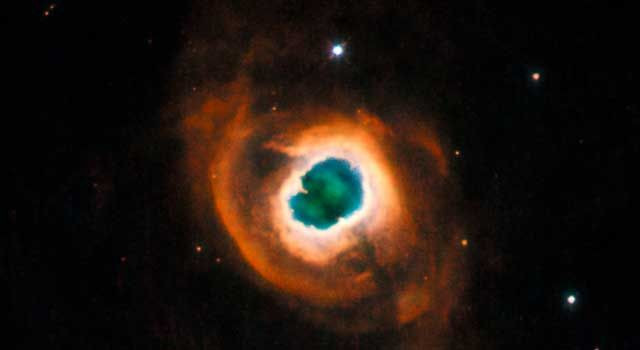Unusual ‘Inside-Out’ Planetary Nebula Spotted

Astronomers studying the dynamics of a distant star recently spotted a strange cosmic feature – a planetary nebula that appears to have formed inside out.
For years, astronomers have known about planetary nebulae or clouds of gas and dust that form when stars weighing as much as eight Suns are on their way to becoming white dwarves. During the aging process, which lasts for tens of thousands of years, they start emitting huge chunks of gas and dust, which later transforms into a cloud of charged particles.
Normally, the ultraviolet energy from the star radiates the nebula and ionizes its gases in a certain pattern. But, in the case of planetary nebula HuBi 1, the scientists observed some major changes.
Essentially, instead of hosting the normal layered structure with highly-ionized gas closer to the star, followed by less-ionized ones in the farther and outermost regions, the nebula had signs of high ionization in the outer layer and lower ionization closer to the star.
“Everyone thought it was impossible,” Martín Guerrero, one of the authors of the study from the Instituto de Astrofísica de Andalucía, told Gizmodo. “We see in this truly unique planetary nebula is what’s closer... has lower ionization, and what’s farther has higher ionization.”
To delve into the unique behavior, the team analyzed observations of the star sitting at the heart of the nebula. The work revealed that the light from the aging star has been fading over the last 46 years. It dimmed nearly by 1000 times and probably had an effect on the nebula.
As the team theorized, during these years, the star probably woke up and emitted an unexpected shockwave towards the nebula. The material rippling through the nebula altered the structure of its gases, with high ionization candidates on the outside and lower, cooled ones on the inside. Moreover, the layer forming after the ejection of matter would have blocked some of its energy, keeping the inner gas elements from being ionized.
If the theory is correct, the nebula will continue to expand in the near future, the researchers added. They also noted that our own Sun, which nearly weighs just as much as the star studied in this case, might also go through similar processes as it continues to age. Also, observation of aging stars and their planetary nebulae, like the one seen in this case, could provide more insight into the evolution of stars and the galaxies hosting them.
The study titled, “The inside-out planetary nebula around a born-again star,” was published on Aug. 6 in the journal Nature Astronomy.
© Copyright IBTimes 2025. All rights reserved.





















